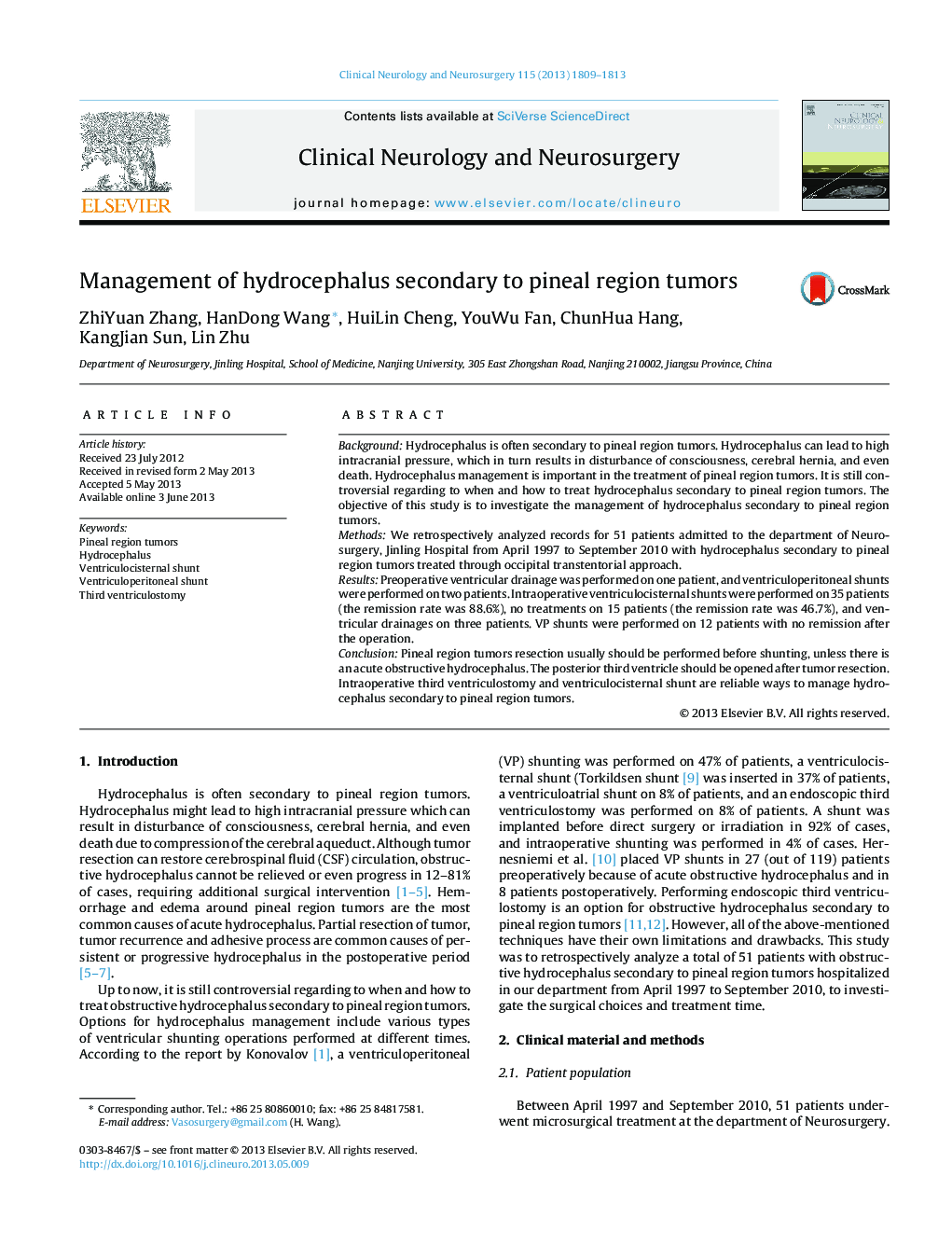| Article ID | Journal | Published Year | Pages | File Type |
|---|---|---|---|---|
| 3040505 | Clinical Neurology and Neurosurgery | 2013 | 5 Pages |
BackgroundHydrocephalus is often secondary to pineal region tumors. Hydrocephalus can lead to high intracranial pressure, which in turn results in disturbance of consciousness, cerebral hernia, and even death. Hydrocephalus management is important in the treatment of pineal region tumors. It is still controversial regarding to when and how to treat hydrocephalus secondary to pineal region tumors. The objective of this study is to investigate the management of hydrocephalus secondary to pineal region tumors.MethodsWe retrospectively analyzed records for 51 patients admitted to the department of Neurosurgery, Jinling Hospital from April 1997 to September 2010 with hydrocephalus secondary to pineal region tumors treated through occipital transtentorial approach.ResultsPreoperative ventricular drainage was performed on one patient, and ventriculoperitoneal shunts were performed on two patients. Intraoperative ventriculocisternal shunts were performed on 35 patients (the remission rate was 88.6%), no treatments on 15 patients (the remission rate was 46.7%), and ventricular drainages on three patients. VP shunts were performed on 12 patients with no remission after the operation.ConclusionPineal region tumors resection usually should be performed before shunting, unless there is an acute obstructive hydrocephalus. The posterior third ventricle should be opened after tumor resection. Intraoperative third ventriculostomy and ventriculocisternal shunt are reliable ways to manage hydrocephalus secondary to pineal region tumors.
